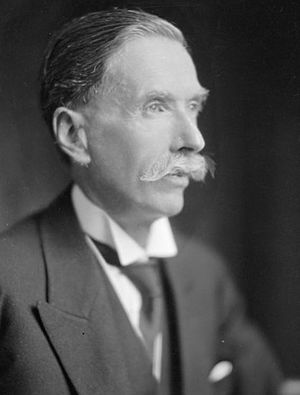Thomas Sidey facts for kids
Quick facts for kids
Sir Thomas Sidey
|
|
|---|---|
 |
|
| 15th Attorney-General of New Zealand | |
| In office 10 December 1928 – 22 September 1931 |
|
| Preceded by | Frank Rolleston |
| Succeeded by | William Downie Stewart Jr |
| 28th Minister of Justice of New Zealand | |
| In office 18 December 1929 – 28 May 1930 |
|
| Preceded by | Thomas Wilford |
| Succeeded by | John Cobbe |
| Personal details | |
| Born |
Thomas Kay Sidey
27 May 1863 Dunedin, New Zealand |
| Died | 20 May 1933 (aged 69) Dunedin, New Zealand |
| Political party | Liberal Party (1901-28) United Party (1928-33) |
| Spouse | Helena Baxter |
| Children | 1 |
| Relatives | Stuart Sidey (son) |
Sir Thomas Kay Sidey (born 27 May 1863, died 20 May 1933) was an important New Zealand politician. He is best known for helping to bring daylight saving time to New Zealand. This change means we move our clocks forward in summer. He came from the Otago region.
Contents
Early Life and Education
Thomas Kay Sidey was born in Dunedin, New Zealand, on 27 May 1863. His parents were John and Johan Murray Sidey. His father became wealthy during the Otago Gold Rush by running a store.
Young Tom Sidey went to Otago Boys' High School. Later, he studied law at the University of Otago. He earned his law degree in 1889. For the next ten years, he worked as a lawyer, helping people with legal matters.
He married Helena Baxter on 17 June 1903. They had one son together.
Political Journey
Thomas Sidey started his political career in local government. He was a member of the Caversham Borough Council. He was also elected Mayor of Caversham three times: in 1894, 1899, and 1901.
In 1901, Sidey became a member of the House of Representatives. This happened after a special election in the Caversham area. He joined the Liberal Party. He stayed with this party throughout his time in Parliament.
Sidey represented the Caversham area from 1901 to 1908. After that, he represented the Dunedin South area from 1908 until 1928. In 1928, he retired from the House of Representatives. He was then appointed to the Legislative Council. This was another part of New Zealand's government at the time. He served there until 1933.
During his career, Sidey also held important government jobs. He was the Attorney-General from 1928 to 1931. This role is like the chief legal advisor to the government. He was also the Minister of Justice from 1930 to 1931. This role involves overseeing the country's justice system.
Bringing Daylight Saving Time to New Zealand
One of Sidey's biggest achievements was his work on daylight saving time. From 1909 onwards, he repeatedly tried to pass a law for it. This type of law, proposed by a regular member of Parliament, is called a private member's bill.
His bill aimed to move clocks forward by one hour during the summer. This would give people more daylight in the evenings. The idea almost became law in 1915. In 1926, the House of Representatives approved it, but the Legislative Council rejected it. Finally, in 1927, his efforts paid off, and the law was approved.
In 1930, Thomas Sidey was honoured for his public service. He was made a Knight Bachelor, which means he could use the title "Sir" before his name.
Later Life and Legacy
Sir Thomas Sidey passed away at his home on 20 May 1933. He was survived by his wife, Helena, and their son, Stuart Sidey.
His son, Stuart Sidey, followed in his father's footsteps. He became the Mayor of Dunedin from 1959 to 1965. Sir Thomas's wife, Helena, Lady Sidey, was also recognised for her work. She received an award in 1953 for her services to social welfare, especially helping women's groups.
The Royal Society of New Zealand still honours Sir Thomas Kay Sidey today. They award the T. K. Sidey Medal for amazing scientific research.

